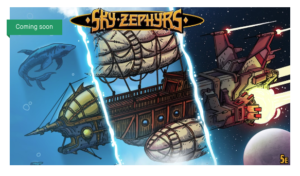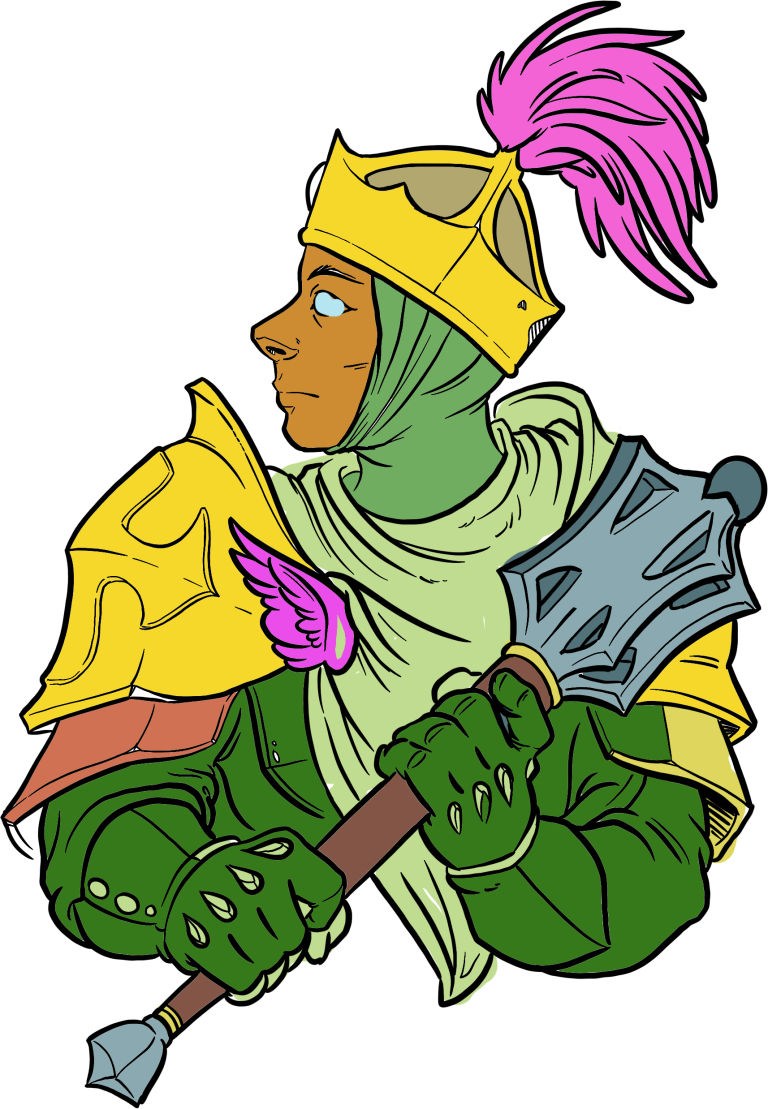By Jason Campbell
NOTE: The quickstart guide for Sky Zephyrs was provided to Shadomain by the authors for this preview.
Sky Zephyrs – Gaumr and Sattva’s Comprehensive Guide to Airships and Sky Combat is a project kickstarting this August. The book is described as a “combat overlay” for Dungeons & Dragons 5th edition. The book will be at least 200 pages. In addition to the book, the creators plan a website that lets users build an airship. Shadomain was provided the quickstart guide for this preview, which is 30 pages and gives an outline of the book.

Sky Zephyrs is a toolset which DMs can add to their D&D games as a set of rules to cover air combat. The term “zephyrs” is used to apply to types of ships using a sort of steampunk technology, but the combat rules could be applied to other flying vehicles including larger steeds. Each chapter of the book is introduced with a conversation between the characters Gaumr and Sattva. This design sets a welcoming mood for the reader. The first chapter breaks down the five air zones and the effects they have on zephyrs. The higher zones can add complications for flying vehicles; this is an important part of the Sky Zephyr rules.
The next chapter details types of zephyrs including sections and power supplies among others. This is where players will want to dive into, as constructing a “cool” ship could be a sort of creative game of its own.
The following chapter details the important aspect of the air crew of each ship. Different zephyrs require different crews and each crew is stat’d as an NPC but also has a role to serve on the ship. A ship that takes damage can potentially lose crew members. Crewmembers can gain in skills; they start as normal but can grow to be trained or even specialists.
Chapter 5 details the combat rules, which are crucial to a D&D game that deals with airships. The classic difficulty in air combat is of course tracking movement in three dimensions. Sky Zephyrs gives each ship a number of speed points which the players can use to make maneuvers, including adjusting momentum, turning and adjusting altitude. This adds complexity to the 5e rules, but if you’ve tried to do air combat without rules such as these, you’ll understand that this added complexity allows for efficient game play. The guide goes on to list statistics of typical zephyrs with entertaining color illustrations.
Sky Zephyrs is going to be a well designed system for a complex scenario. If you’re a DM who is trying to run a simplified ruleset, this might not be for you. If your campaign involves only an occasional flying jaunt to go from place to place, you likely don’t need to add an entire set of rules to the core rules.
If you’re looking to add a unique experience to your game, this might be what you’re looking for. Many 5e games end up being two dimensional, especially in the age of VTTs. This rule expansion extends the game space into a third dimension, giving players something else to imagine and PCs a new set of actions to take within the game. If you’re looking to add another type of adventure not completely covered by the D&D core rules, you’ll want to back this project.





